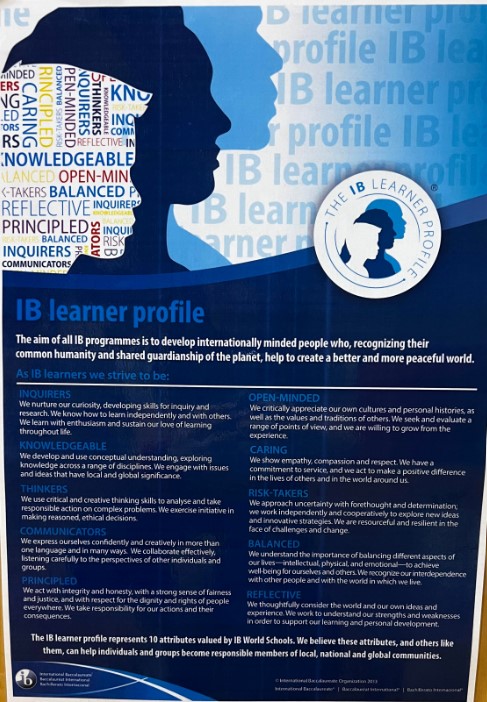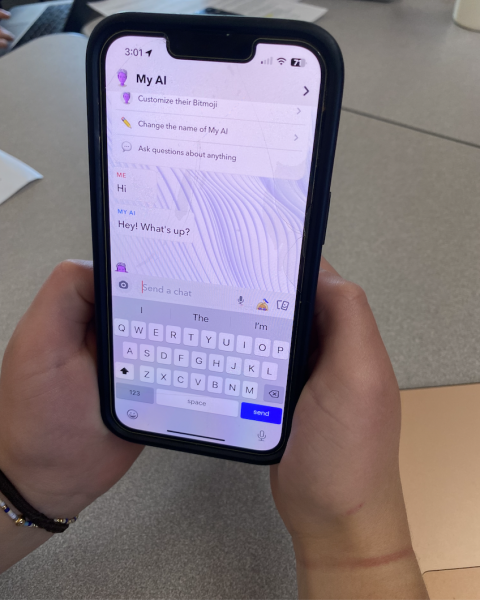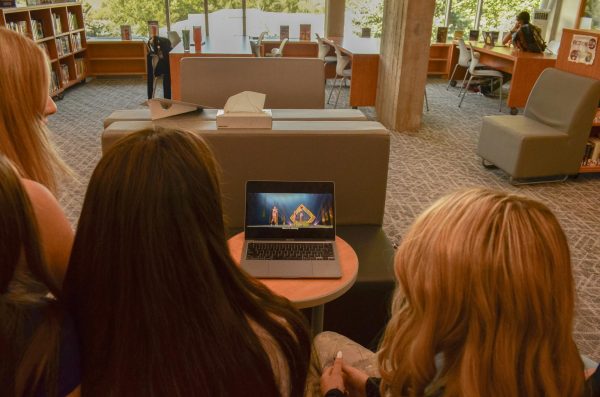Schools and IB credits
An image of the IB characteristics poster up in all AHS classrooms.
The International Baccalaureate (IB) program is used by some high schools internationally as an alternative to Advanced Placement (AP) classes as a harder curriculum, but colleges and universities often don’t recognize the IB program as any more than a regular class.
Colleges around the nation are relaxing the standards required for acceptance. SAT scores aren’t always required, and when they are, they often play less of a role in deciding if a student gets accepted. The bigger factors the activities a student does, the more extracurriculars and more AP classes the better the chance for acceptance will be. AP has long been the standard for high schools around the US. AP and IB can raise a student’s GPA above 4.00 in some cases, but if a school doesn’t recognize IB credits it is reverted to an unweighted GPA.
Eileen Knapp, the IB coordinator for AHS, talks about how it is not as bleak as it may seem. The IB program is internationally based, and instead of straightforward learning, it is much more theoretical. IB is more about the “why;” it is more about pushing students to think deeper. AP is about pushing students to be able to memorize more and do more challenging work, but not think deeply about the work. IB is therefore more about preparing students for life because it is not so straightforward.
“You can more easily prepare for an AP exam and know what will be on those exams, where IB is always going to push you a little bit farther,” Knapp said.
The IB diploma also requires more than the traditional prerequisites. The Creativity, Activity, and Service project (CAS) alongside the Extended Essay (EE) are components that colleges and universities look at whether or not they recognize IB credits. The EE is a 4,000-word essay, and colleges can then see that the student is much more experienced in writing than others who haven’t had that opportunity. If a student chooses to participate in the IB diploma program, they have to complete these projects. The diploma strengthens the student’s resume in addition to the IB classes themselves with the extra projects and writing they have to do.
“[CAS] shows a student’s well rounded, they’re in sports, they’re in clubs, they’re doing service activities for other people. They’re not just solely studying. And then you also have the Extended Essay which colleges like to know that a student has written a 4000-word research paper which typically you wouldn’t do in a regular class,” Knapp said.
However, if you were applying for a college like Colorado College (CC) that doesn’t recognize IB classes, then you would theoretically be at a disadvantage over students who have a plethora of AP classes. According to the CC admissions office, having the same grades as an AP student would make no difference. The IB student’s unweighted GPA, or GPA above 4.00, would be reverted to the weighted GPA, or GPA with a max of 4.00, and the AP students wouldn’t. However, a college can’t make decisions based on a high school’s choice of classes.
“It does not matter AP or IB. College admissions are not critiquing the students based on the program that the schools chose. I do not think it’s a disadvantage to have IB versus AP in admissions,” Knapp said.
Students’ first response to how they would change the IB program is rarely based on switching to AP or another program. Often it’s something more subtle. Students want more of one type of class and less of another. A major field that students want more of is science, more classes besides physics and bio as IB. They also may want to get rid of some of the prerequisites that are required for the diploma. It is often not to eliminate the program entirely.
“It would be nice if they gave us four years for the diploma,” Torin Malone, an AHS sophomore said.

This is Beau's second year with The Skier Scribbler. He is a junior and is passionate about the environment. He likes to rock climb, ski, and be outside. ...

































